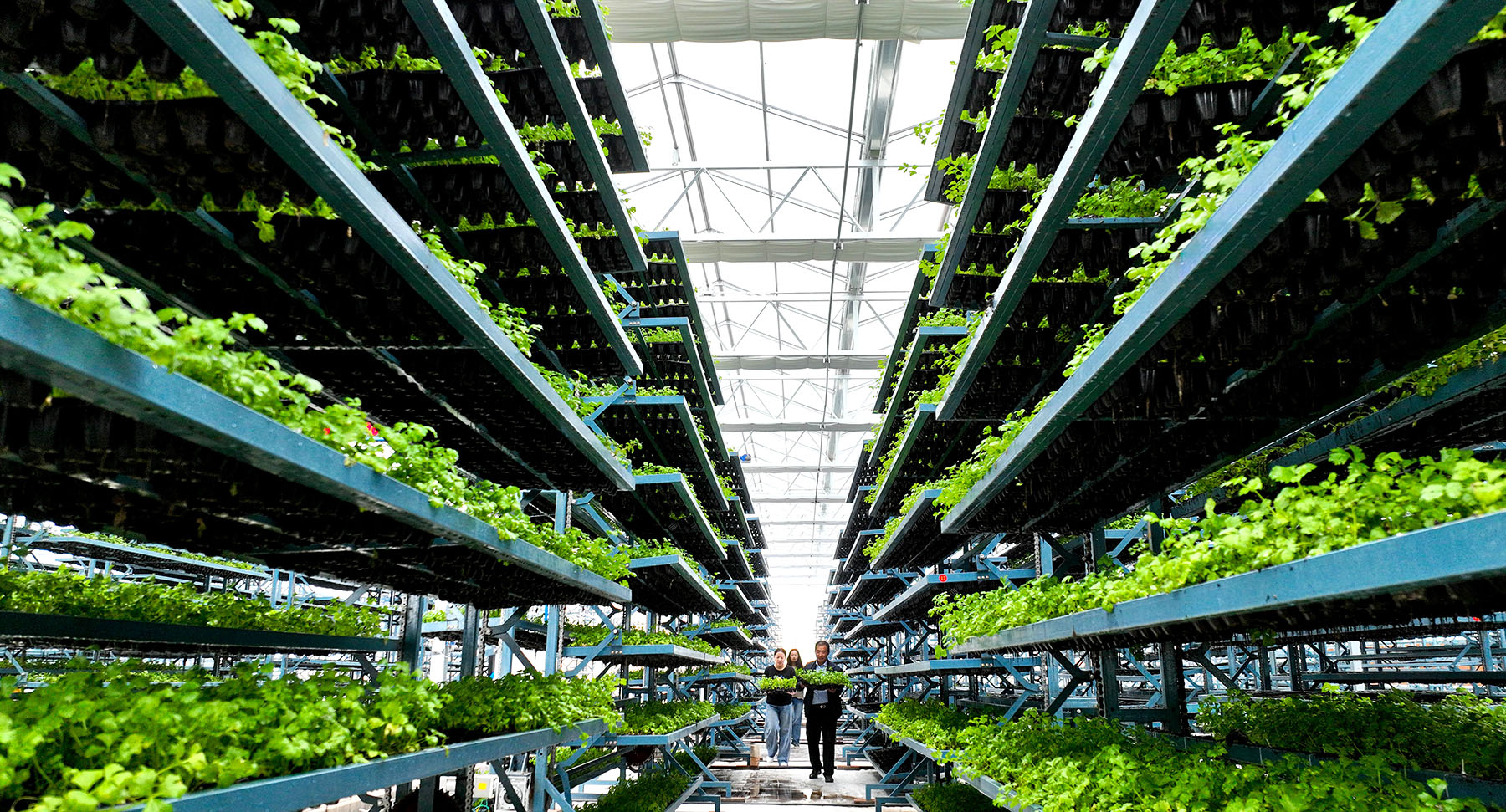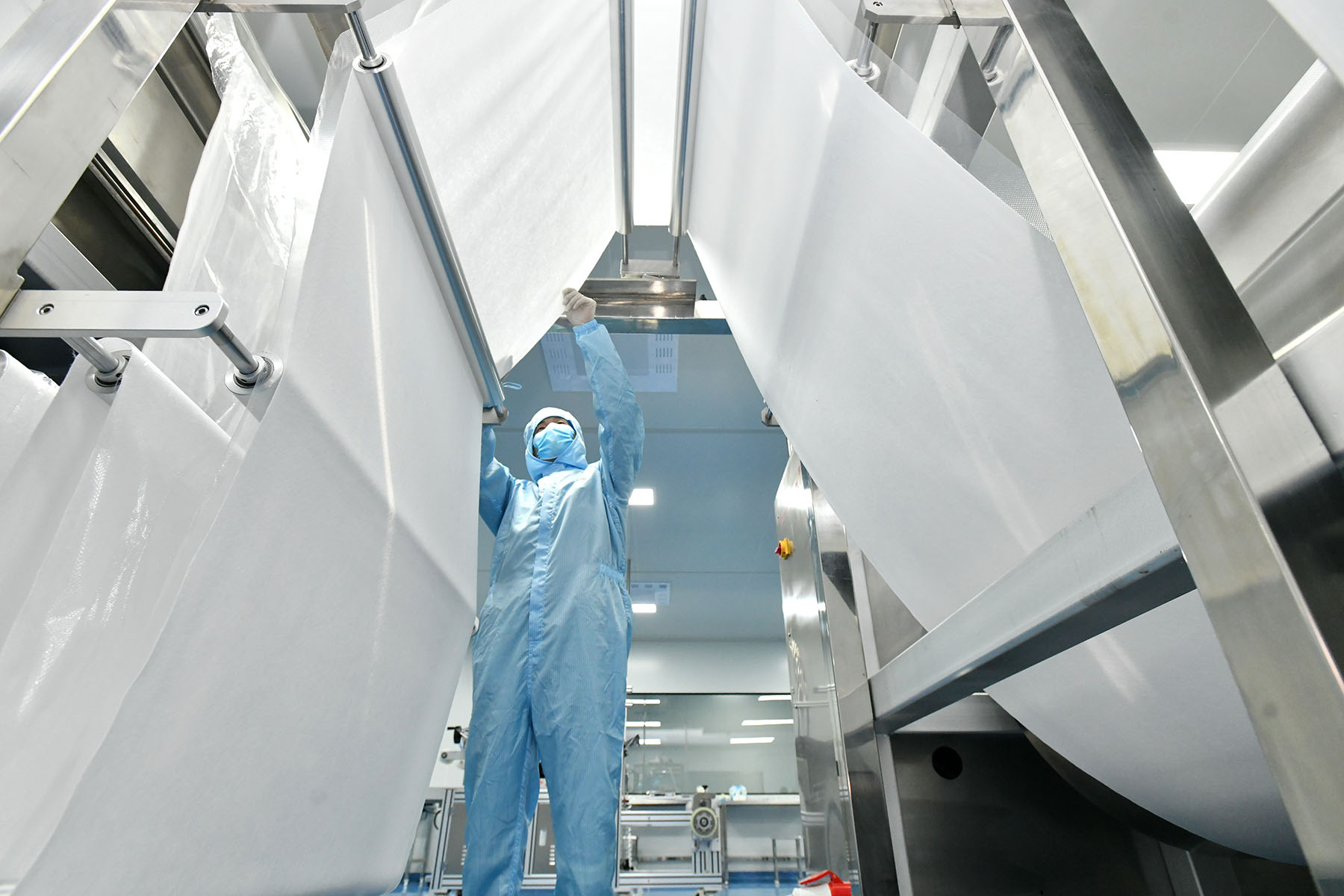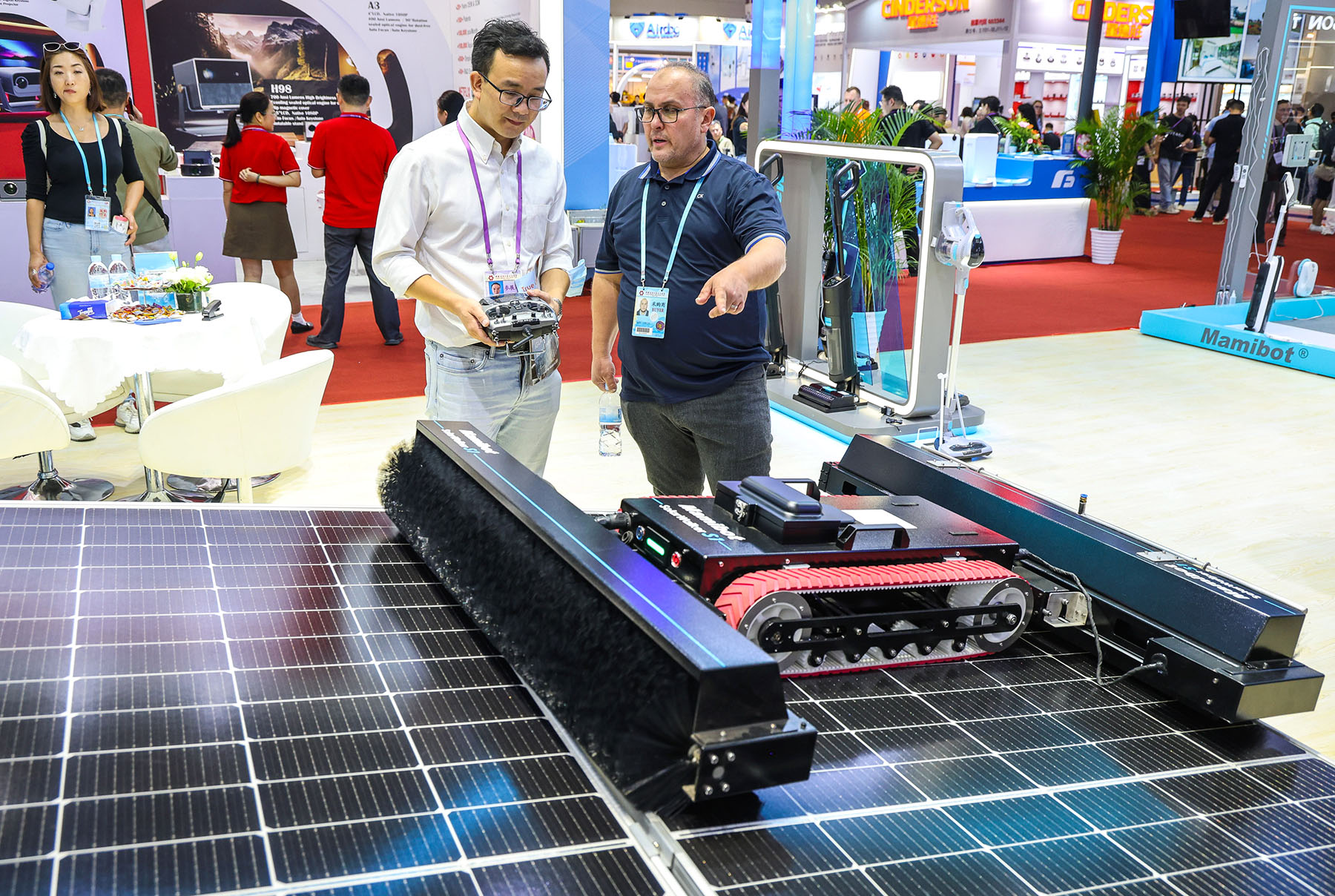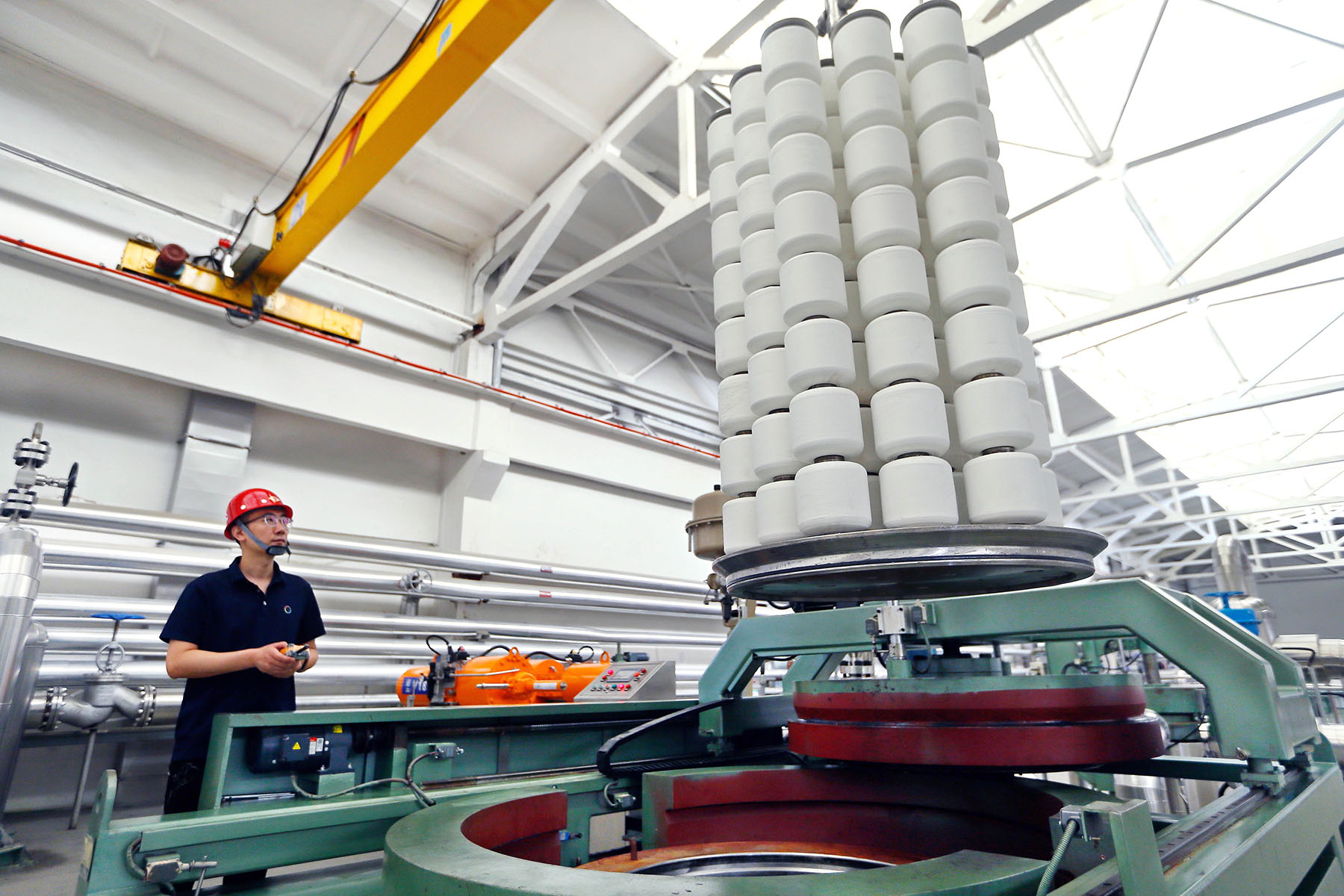Nation's entrepreneurs answer call to reduce emissions and protect environment

Editor's note: China Daily is publishing a series illustrating the efforts being made to achieve the country's carbon peak and carbon neutrality goals.
At the 75th session of the United Nations General Assembly on Sept 22, 2020, President Xi Jinping announced that China would peak its carbon dioxide emissions before 2030 and achieve carbon neutrality before 2060.
Five years on, the country has implemented a series of preferential policies to advance its dual carbon targets, and companies in the low-carbon domain are keenly aware of the transformative impacts the goals have had nationwide.
These ambitious goals stirred excitement among them, enabling them to swiftly identify market opportunities and achieve rapid business growth. Also driven by a strong belief in and passion for the low-carbon development trend, they serve as a microcosm of China's transition to a low-carbon future.
READ MORE: China continues push for greener packaging
Before the official declaration of the dual carbon goals, entrepreneur Bai Yanhui had already pivoted her career toward building energy efficiency management — a move that positioned her to recognize firsthand how profoundly national climate commitments energize markets.
Originally specializing in centralized air conditioning and smart building controls, her firm, Nanjing Xiangtai System Technology Co, based in Nanjing, capital of Jiangsu province, saw explosive early success. In the early 2010s, the company's revenue doubled yearly amid China's push for large-scale infrastructure expansion.
By 2015, however, Bai sensed looming stagnation in the infrastructure sector. "I could clearly foresee that China's infrastructure development was rapidly approaching a state of saturation.
"The company would face a developmental bottleneck. And there was nothing I could do to reverse this trend," she said.
To navigate impending headwinds, Bai spearheaded market studies at home and abroad, and was greatly inspired during a visit to Europe.
The pollution-free vistas in Europe that feature blue sky and white clouds helped her crystallize a new vision for her company to contribute to the restoration of blue skies, white clouds and clean air in China.
Despite initial setbacks, the Chinese government's announcement of its dual carbon goals meant a brighter future for her company.
The momentum accelerated dramatically upon the introduction of concrete regulations supporting mechanisms last year, such as the energy cost trusteeship, an arrangement where businesses delegate their energy expenses to specialized third-party providers, who primarily profit by improving energy consumption efficiency.
A guideline unveiled by the Communist Party of China Central Committee and the State Council in August last year, for instance, vowed to vigorously promote trusteeship services oriented toward environmental improvement.
China will accelerate the retrofitting of existing buildings and municipal infrastructure to enhance energy and water consumption efficiency and reduce carbon emissions, the document said.
The country will also encourage the adoption of advanced and efficient lighting, air conditioning and elevator systems.
Bai said her company secured 15 energy cost management projects last year to enhance energy efficiency in government and public buildings. This represents 7.2 percent of all projects for such buildings nationwide.
Her energy efficiency management team has increased from 70 in 2017 to more than 160, she said.

In 2017, the company's revenue was 40 million yuan ($5.6 million). So far this year, it has secured energy cost trusteeship contracts with a total value of 3 billion yuan.
To date, the company has served over 2,300 clients in the energy efficiency services sector. This year, its energy cost trusteeship business has helped clients save 60 million kilowatt hours of electricity, reducing carbon emissions by approximately 59,000 metric tons, Bai said.
The company is still faced with challenges that extend beyond reliance on macroeconomic tailwinds. The limited awareness of low-carbon development remains a significant obstacle in acquiring clients in certain regions, she said.
Unlike Bai, Zhu Weiqing, the chairwoman of Shanghai Treasure Carbon New Energy Environmental Technology Co, made her first venture into the professional world in the low-carbon sector.
While studying marketing at Durham University in the United Kingdom, Zhu stumbled upon an unexpected passion. A casual conversation with a law school acquaintance piqued her curiosity about the United Nations' Clean Development Mechanism — a program allowing developing nations to generate tradeable emissions credits for industrialized countries striving toward climate goals.
At the time, she thought, "How could such an industry exist?" Little did she realize this question would chart her career path.
Returning home to China after graduation, Zhu discovered policymakers laying the groundwork for domestic carbon-trading pilot programs. She seized the moment, launching her company in 2010.
Yet progress proved slow initially. "There was nothing to trade in the entire market in 2011," she said.
Early stagnation gave way to cautious optimism starting in late 2011, however, when authorities launched pilot carbon trading programs in seven parts of the country, including Beijing and Hubei province.
Regulatory tailwinds arrived in mid-2012, too, when China rolled out provisional rules governing voluntary emission cuts, granting companies legal pathways to transact offsets.
These shifts gradually unlocked doors for Zhu's firm. Starting purely as a broker purchasing and reselling carbon credits, the team branched into strategic partnerships with banks to design trust funds managing pooled carbon assets.
Later iterations saw them advising corporations navigating compliance obligations and building an online information system, which provides unified carbon asset management solutions.
But in 2017, regulators halted issuance under China Certified Emission Reductions amid concerns over inflated inventories and subpar project quality.

Despite the turbulence, resilience paid dividends three years later when the dual carbon targets were announced. Coverage of the targets dominated headlines everywhere, Zhu said.
"I felt that, at last, my perseverance was about to pay off," she said. "Everyone in my sector is driven by a strong belief and passion for the trend toward carbon neutrality. It's only a matter of time, and that time has finally come."
Market dynamics vindicated her swiftly thereafter.
After the official launch of China's national carbon trading market on 16 July 2021, the government released a steady stream of regulations and technical rules that clarified market expectations. Riding this policy tailwind, the company's turnover exceeded 300 million yuan in that year.
Following the inception of the national market, Zhu said that her company has extended its reach to all key provinces nationwide. The firm's workforce surged fivefold, growing from roughly 30 employees to over 200 during this period.
Outside the Chinese mainland, the company has proactively broadened its footprint through subsidiaries in strategic markets such as Hong Kong, and internationally in Mongolia, Singapore, Nepal and Timor-Leste, while deepening project cooperation with the Solomon Islands, Laos and Madagascar.
"Our company has expanded at a rapid pace. Since the launch of the national market, we have consistently experienced steady growth," she said.
Fang Kunli, an entrepreneur specializing in manufacturing with recycled materials, said her company has greatly benefited from the increased public awareness driven by the dual carbon goals.
Previously employed as an elevator technician, Fang began studying English and commerce at the age of 27, eventually joining a foreign trade company. In 2008, she discovered by chance that recycled materials could be used to make bags.
Motivated by a deep interest, she founded Free Markets Eco Friendly Products Manufacturing in Shantou, Guangdong province, focusing on creating products from recycled materials.
"Today, we have developed 500 types of recycled materials across 12 categories," she said. "For example, we create notebooks, hats and bags from wine corks."
Other materials they recycle include coffee grounds, used tires, windshields and paper, which are turned into products such as bags, pouches and clothes. Any waste can be transformed into something valuable, Fang said.
Before 2020, the company focused solely on exports. "We began exploring the domestic market after the dual carbon goals were introduced, and within the first year, domestic sales accounted for 30 percent of our business," she said.
The dual carbon goals significantly enhanced the visibility of Fang's company, which she described as a "turning point" for her business. This heightened awareness allowed her to promote products made from recycled materials on Chinese e-commerce platforms.
She actively shares her experience at environmental protection forums and seminars. "I am driven by the responsibility to protect the environment, and I hope to inspire more people to join this cause through the exposure and promotion of our eco-friendly products," she said.

Manufacturing with recycled materials is challenging, as it involves a comprehensive production chain that includes waste recycling, materials development, product design and marketing, Fang said, adding that completing a full product cycle takes over seven months.
"The cost of converting recycled waste into usable materials results in higher prices for our products," she said. "While the investment is substantial, the returns are slow. Without self-belief, it is very difficult to persevere."
Given the company's reliance on recycled waste, Fang advocates for more diligent waste sorting efforts.
Kong Zhicong, founder and CEO of Weirong New Material Technology (Shenzhen) Co in Shenzhen, Guangdong province, is a comparative latecomer to the low-carbon sector. However, he is tapping into innovative solutions to address plastic pollution and contribute to the dual carbon goals by making edible tableware.
His company's edible tableware has appeared in parks, offices and hotels, replacing single-use plastic tableware.
Kong said the products embody the concept of "from farm to fork, from fork to farm". "The materials are 100 percent agricultural products, such as rice powder, fiber and cassava, with zero artificial additives, making the products edible for both humans and animals," he said.
The food-based tableware can be recycled two to three times and can even serve as animal feed after use. It requires no industrial composting and can decompose completely under household composting conditions in approximately 14 days, leaving no residue or pollution, according to the company.
This shortened degradation cycle reduces the end-of-life processing costs associated with traditional disposable tableware, allowing for more effective land use and decreasing the environmental impact and pollution caused by solid waste, Kong said.
The entrepreneur conceived the idea of producing edible tableware while studying biomedical engineering in the United States. "I learned that microplastics have entered humans' brains and hearts, potentially leading to diseases," he said.
"I believe that products related to food should be safe to put in the mouth and degradable once discarded," he said.
ALSO READ: Efforts made to make supply chains greener
Kong first launched the business in the US in 2017. In 2020, he returned to China and established operations in Shenzhen. "Our edible technology requires a concentrated and efficient industrial chain, and China offers that advantage," he said.
In 2020, when China proposed its dual carbon goals, Kong's company received policy support and positive market feedback. "Public awareness increased after the launch of the dual carbon goals, facilitating the promotion of our recyclable and degradable products," he said, adding that younger generations are particularly interested in these environmentally friendly products.
Since last year, China's hotel industry in tier-one cities — usually referring to Beijing, Shanghai and Guangzhou and Shenzhen in Guangdong — has been implementing carbon quota management, incorporating hotel carbon emissions into the government's overall carbon management framework.
Kong's company reported that intent orders have risen since the start of the year, totaling about $5 million.
"As a brand-new product category, promoting and educating people about the recyclable concept takes time. We will continue to use various scenarios to amplify its influence and reduce costs by scaling up production," he said.
Contact the writers at houliqiang@chinadaily.com.cn


